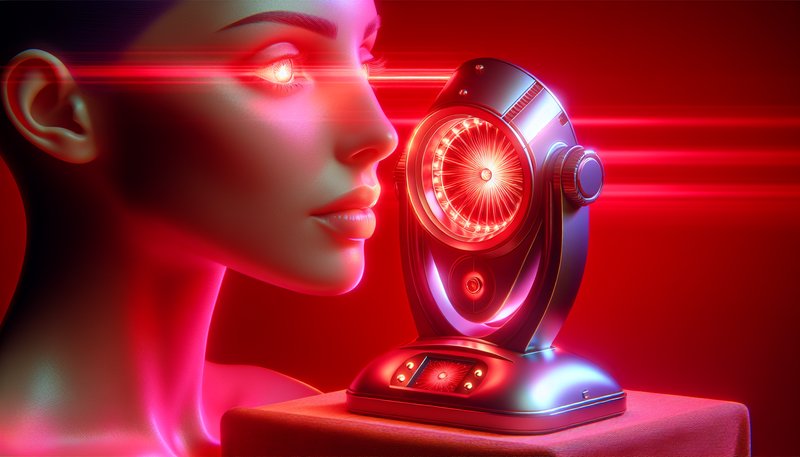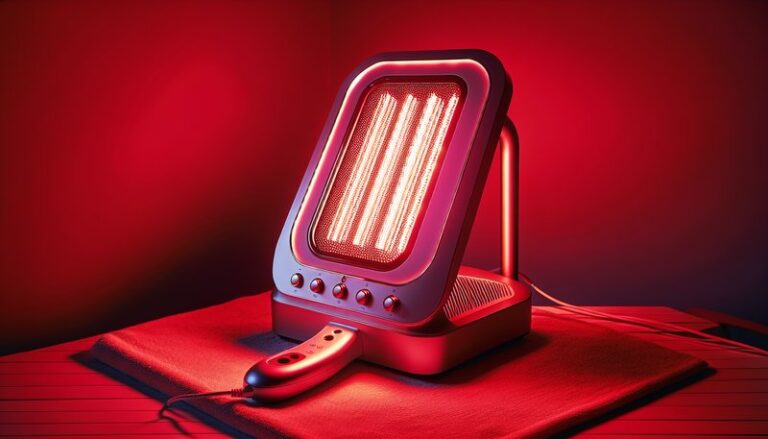Is Red Light Therapy Dangerous For Eyes?
Is your eyesight safe during red light therapy treatments?
In this article, we will explore the safety of red light therapy concerning eye health. We will cover what red light therapy is, its potential dangers to the eyes, the benefits it offers, precautions to consider, and alternatives you may want to explore. By the end, you’ll have a solid understanding of whether this popular treatment is risky for your eyes.
Key Takeaways
- Red light therapy has been widely used for its therapeutic benefits, but concerns about its safety for the eyes exist.
- Potential eye damage from red light therapy is largely dependent on exposure duration and intensity.
- There are precautions you can take to minimize risks, and alternatives to consider if you’re still concerned.
What is Red Light Therapy?
Red light therapy, often referred to as low-level laser therapy (LLLT), involves the use of low-wavelength red light to treat various conditions. This type of therapy is commonly used for skin rejuvenation, wound healing, and even pain relief. The light typically penetrates the skin to promote cellular function and has become popular in both clinical settings and at-home devices.
The device emits light at a wavelength between 600 to 1000 nanometers, targeting cellular functions to enhance metabolism within cells, stimulate regeneration, and reduce inflammation. While many users report positive effects, understanding the implications of exposure to light, especially regarding eye safety, is crucial.
What are the Benefits of Red Light Therapy?
Using red light therapy for various conditions has several advantages. Below, we will explore some key benefits.
Enhances Skin Health
Red light therapy can stimulate collagen production and improve skin texture. Many users experience reduced wrinkles and improved skin tone after undergoing treatment regularly.
Accelerates Healing
Research indicates that red light therapy can promote wound healing by increasing blood flow and encouraging cell repair. This makes it a promising option for recovery from injuries and surgeries.
Reduces Inflammation and Pain
Athletes and individuals with chronic pain may benefit from red light therapy, as it has been shown to reduce inflammation and alleviate pain in certain conditions, enhancing recovery times.
Promotes Hair Growth
Some studies have indicated that red light therapy may also encourage hair regrowth in individuals experiencing certain types of hair loss, making it a therapeutic option in dermatology.
Is it Possible to Use Red Light Therapy Safely on the Eyes?
While red light therapy has many benefits, its safety for eye health is a valid concern. Exposure to intense light, especially for extended periods, could potentially lead to damage.
What are the Advantages of Eye Safety Practices?
The safety measures one can adopt while undergoing red light therapy include:
- Protection with Goggles: Wearing protective eyewear specifically designed for light therapy can prevent direct exposure to retinal areas, helping to mitigate potential harm.
- Adjusting Light Intensity: Many devices allow users to adjust light intensity. Lowering the intensity during treatment can help protect the eyes without significantly affecting effectiveness.
What are the Disadvantages of Eye Safety Practices?
- Limitation on Effectiveness: Depending on the treatment area, excessive protective measures might limit the therapy’s effectiveness for nearby regions, such as the face.
- Discomfort: Some users may find that certain types of protective eyewear are uncomfortable or not practical during therapy sessions.
What are the Things to Consider Before Using Red Light Therapy Near the Eyes?
Before starting treatment, it’s vital to weigh the potential risks against the benefits. Here are some considerations to keep in mind:
Consult a Professional
Always seek guidance from a healthcare provider or qualified professional experienced in red light therapy before beginning treatment, particularly if you have underlying eye conditions.
Evaluate Device Quality
Not all red light therapy devices are created equal. Look for high-quality, reputable devices with clear safety guidelines to ensure they meet safety standards.
Monitor Duration and Frequency of Use
Limit the duration and frequency of your sessions to prevent potential overexposure. Shorter, less intense sessions may be safer and still effective.
Explore further in Does Red Light Therapy Help?
Get insights from Duration of Red Light Therapy?
What are the Alternatives to Red Light Therapy?
If you’re concerned about the risks associated with red light therapy to the eyes, there are alternative therapies to explore:
Infrared Therapy
Infrared therapies use longer wavelengths of light that can penetrate tissues without posing the same risks to the eyes. Many find it a beneficial alternative for pain relief and inflammation.
Cold Laser Therapy
Cold laser therapy, similar to red light therapy but less intense, can stimulate healing without the same level of eye exposure. It’s widely used in physical rehabilitation settings.
Cryotherapy
For skin rejuvenation and inflammation reduction, cryotherapy offers an alternative approach by exposing the body to cold temperatures. This method is less invasively focused on light exposure.
Conclusion: Is it Recommended to Use Red Light Therapy Near the Eyes?
While red light therapy can promote various health benefits, the potential risks associated with eye exposure cannot be overlooked. By adhering to safety practices like protective eyewear, consulting professionals, and monitoring device quality, you can safely incorporate red light therapy into your routine. Ultimately, it’s essential to weigh your options and consider alternatives if you feel uncomfortable using this therapy near your eyes.
Frequently Asked Questions
Is all red light therapy potentially harmful to the eyes?
Not all red light therapy poses a risk, but intense exposure without protective measures can lead to damage. It’s crucial to use safety equipment and consult with professionals.
How long should I use red light therapy?
The duration varies based on the device and personal treatment goals, but short sessions of 10-20 minutes are often recommended.
Can I use red light therapy for conditions other than skin healing?
Yes, red light therapy shows potential in various areas, including pain management, inflammation reduction, and even enhancing hair growth.
Are there any specific groups of people who should avoid red light therapy?
Individuals with a history of eye disease or sensitivity to light should consult healthcare providers before using red light therapy.
What should I do if I experience discomfort during therapy?
If you experience any discomfort, it is advisable to stop the treatment immediately and consult a healthcare professional for guidance.





